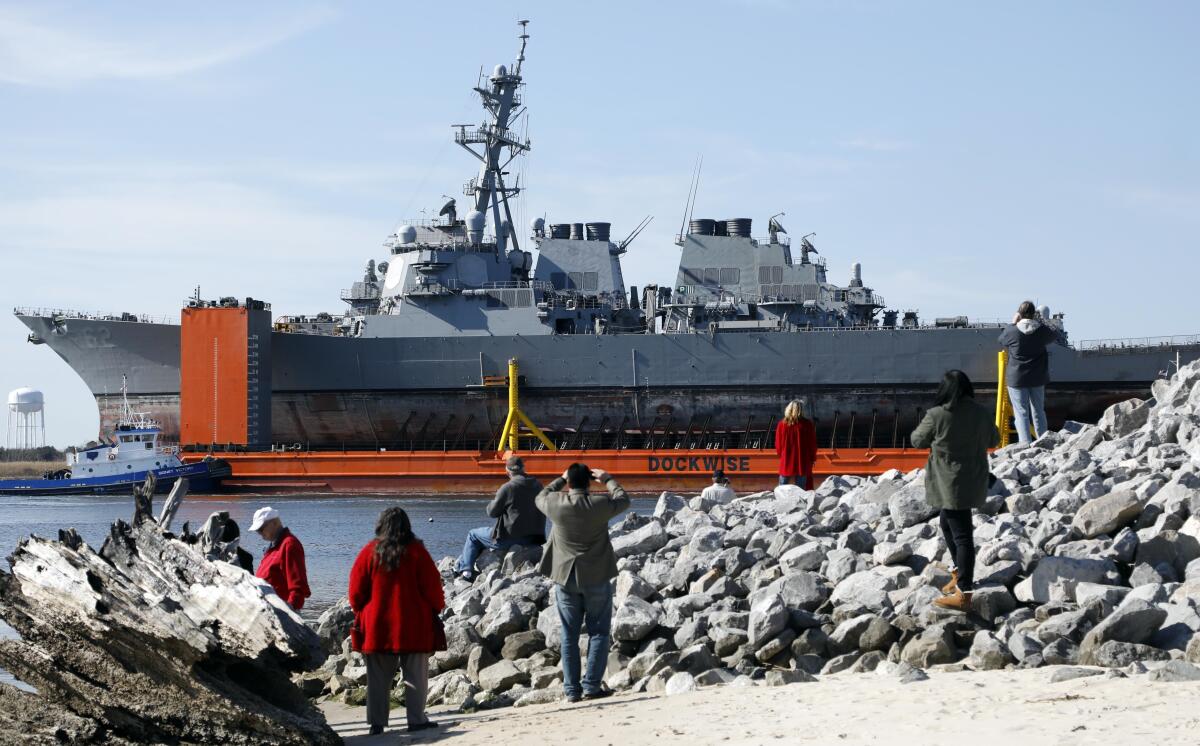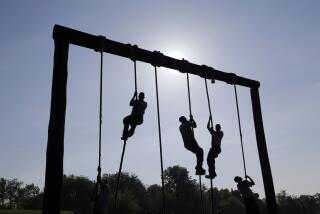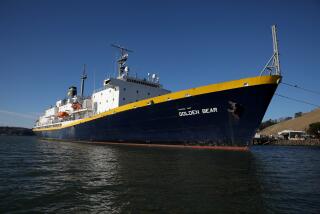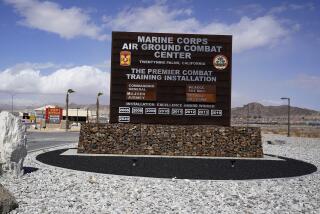After deadly ship collisions, Navy revamps training in San Diego
- Share via
SAN DIEGO — In the four years since two deadly ship collisions stunned the U.S. Navy, the service has been looking for ways to address problems in the fleet that its own investigators said contributed to the deaths of 17 sailors.
Former senior Navy officials have said their warnings about poor maintenance, shoddy technology and a relentless pace of ship deployments went unheeded for years before the 2017 collisions of the guided-missile destroyers Fitzgerald and McCain with container ships, just weeks apart.
Now the Navy is trying to address some of those issues with a new 130,000 square-foot surface ship training center on Naval Base San Diego. The center, the first of two that are planned, is preparing to graduate its first class of surface warfare officers. The $40-million Mariner Skills Training Center Pacific will be fully up and running by the end of the year, according to the center’s commanding officer.
The two Mariner Skills Training Centers in San Diego and Norfolk, Va. — as well as smaller centers in other fleet concentration areas such as Japan; Hawaii; Everett, Wa.; Mayport, Fla.; and Rota, Spain — are intended to better train new surface warfare officers and maintain the skills of the sailors on the fleet’s cruisers, destroyers and other surface ships when taking ships to sea isn’t practical.
Among the myriad issues the Navy blamed for the collisions were fatigue and that bridge crews on the ships failed to plan properly and engaged in unsafe navigational and seamanship practices. The Navy’s review found that intense operations of ships out of Japan, where the service’s 7th Fleet is based, left little time for crews to train or maintain equipment. Communication among ship leadership was also lacking, the Navy said, and the Fitzgerald’s captain was not on the bridge when the ship’s collision occurred, despite his vessel transiting a busy sea lane near Japan.

In San Diego, the training center houses five full-size bridge simulators. They are reminiscent of rides one might find at a Universal Studios theme park — large, wraparound screens encompass both the bridge and two wings on the sides, giving crews the illusion of sailing through some of the globe’s busiest sea lanes.
It also has 30 smaller simulators to train officers on commanding the bridge during difficult navigational maneuvers via voice-recognition software.
Time on the simulators will be mandatory for crews when they’re in port in San Diego, said Cmdr. Leonardo Giovannelli, the commanding officer of the center.
The center is also home to the Navy’s newest surface warfare officer schoolhouse, where surface warfare officers new to the Navy will learn the basic navigational “rules of the road.”
“Having the schoolhouse here — it’s huge,” Giovannelli said. Previously the courses taken by those new surface warfare officers were taught in the Navy’s Surface Warfare School in Newport, R.I.
Vice Adm. Roy Kitchener, the commander of the Naval Surface Forces, said the center is a “game changer.”
“We’re incorporating complex scenarios into state-of-the-art simulators, using operational experience as input from the fleet and embracing the feedback loop to continually improve,” Kitchener said in a statement. “And now with the integration of combat systems simulators, entire watchteams have an avenue to practice warfighting tactics before sailing over the horizon.”
The classes the new officers take have also changed, and the amount of time they’re expected to serve on ships at the start of their careers has been lengthened, Giovannelli said.
This includes a new officer-of-the-deck course that’s been split into two phases — one before an officer reports to their first ship and another before they report to their second. The first cohort of 72 newly minted surface warfare officers are in class now and will graduate in August, Giovannelli said.
The course builds on the Navy’s junior officer-of-the-deck course, which began in 2019, Giovannelli said.
Kitchener said the new training requirements have new officers better prepared for what awaits on their ships.
“Newly reporting junior [surface warfare officers] now have better training than ever before,” he said. “They’re getting nearly 90 hours of training and assessments before even setting foot aboard their first ship.”
Giovannelli, who previously served as the commanding officer of the guided-missile destroyer Preble, said the differences in the officers that came onboard after that course were noticeable.
“I was like, ‘Wow, these guys are really good,’” he said. Since he’s taken over at the schoolhouse, he said he’s continued to get positive reviews from ship captains in the fleet.
Another change to come from the 2017 collisions is that new surface warfare officers start their Navy careers with back-to-back ship tours, Giovannelli said — a 30-month tour on one ship, followed immediately by an 18-month tour on the next, with courses at the skills center in between. Previously, surface officers could complete a tour as a member of a command staff but, Giovannelli said, the Navy decided its newest officers needed more operational time at sea.
Second-phase classes begin this fall, and by the end of the year the center expects to be fully staffed and operating with a staff of 100.
More to Read
Sign up for Essential California
The most important California stories and recommendations in your inbox every morning.
You may occasionally receive promotional content from the Los Angeles Times.











